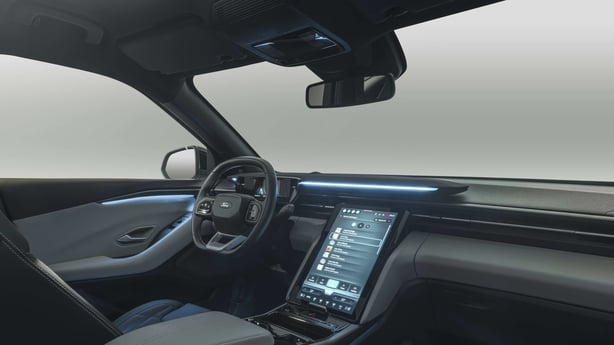By the end of next year, Ford will have four all-electric vehicles on sale - the first of them being its new EV version of the Ford Explorer. It's not exactly an accelerated transition from internal combustion engines to electrification.
But Ford is, firstly, an American company and the change we have seen in Europe in the last few years has simply not happened in the United States.
By comparison with the rest of the world, Ford’s progress has been measured in snail’s paces.
Interestingly, Ford has only been able to move into the mainstream with the help of one of its biggest competitors in Europe - Volkswagen.
At least someone in Ford realised it was going to be left in the Dark Ages unless it managed to get a leg-up from some company that was up to speed in EV development.
The new Explorer, due here early next year, is actually built on the same platform as the VW ID4 and the Skoda Enyaq both of which, ironically, Ford is targeting as competitors for the Explorer.
So we’re likely to see the same batteries as the ID 4 and Enyaq and also the same range, as long as the weights are carefully balanced.

Admittedly, Ford has managed to create a fairly attractive profile for the car, especially at the front and along the sides. I’ve only seen it briefly but first impressions were that it had a bit more character than might have been expected.
In the Ford line-up, the Explorer sits between the Focus and the Kuga. Standard equipment on the entry level "Select" version includes 19" wheels and front heated seats. The driver’s seat gets a massage function. The version above that, the "Premium" gets extras such as a panoramic sunroof and ambient lighting.
What aren’t standard, however, are features such as a 360 degree camera, a heat pump (a device that provides extra range in colder weather) or a power tailgate.
The fact that these features are added options is both notable and challenging now that Ford has to acknowledge the competitive threat posed by Chinese manufacturers. One of the cars the Explorer is competing with is the BYD Atto.
The Atto has that camera, that heat pump and that power tailgate all included in its list of standard equipment. And it currently costs about €11,000 less than the expected price of €50,000 being speculated for the Explorer in Ireland. Pricing nearer the launch date is likely to prove absolutely critical and, by that time companies like BYD will likely have established a major presence on the Irish market.

One of Ford’s big selling points for the Explorer is the 14.6" moveable Sync touchscreen, which is one of the company’s more impressive innovations in recent years. It’s a very good piece of kit with excellent software.
Full satellite navigation is standard and the car also has adaptive cruise control, a rear view camera, pre-collision assist, blind spot assist and a lane change warning function. EuroNCAP crash test results are still awaited.
There’s a 450 litre boot, which doesn’t match the 543 litre capacity of the ID 4, despite the shared engineering.
As with the VW Group EV’s, we should see two battery offerings from Ford - the 52 kWh entry version and the longer range 77 kWh version. The smaller batter should still be good for about 400 km, if my previous experience with VW batteries is anything to go by. Ford says the battery will charge from 10% to 80% in twenty five minutes.
The battery is covered by warranty for eight years or 150,000 kilometres and there’s two years free service included in the purchase.

